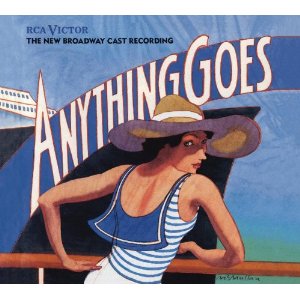SITE GUIDE
SEARCH
REVIEWS
REVIEW ARCHIVES
ADVERTISING AT CURTAINUP
FEATURES
NEWS
Etcetera and
Short Term Listings
LISTINGS
Broadway
Off-Broadway
NYC Restaurants
BOOKS and CDs
OTHER PLACES
Berkshires
London
California
New Jersey
Philadelphia
Elsewhere
QUOTES
TKTS
PLAYWRIGHTS' ALBUMS
LETTERS TO EDITOR
FILM
LINKS
MISCELLANEOUS
Free Updates
Masthead
A CurtainUp Los Angeles Review
La Cage aux Folles
By Jon Magaril
| "Try not to weaken or collapse/ If they discover the petticoat under your chaps"—
Georges to Albin
|
Twenty-four year-old Jean-Michel sets the plot in motion by telling Georges, his father, that he wants his birth mother at his upcoming wedding. But he wants Albin, who's performed all the other functions of a mother., to stay away. This would make a fairly traditional set-up for a dysfunctional family musical, except that the family is led by two men, behaving for most intents and purposes as husband and wife.
This broadly entertaining touring production springs from director Terry Johnson's Tony-winning Broadway revival. That, in turn, was based on his small-scale version at London's 180-seat Menier Chocolate Factory. Johnson transforms the La Cage aux Folles drag club, run by Georges and featuring Albin as drag diva Zaza, from the elegant original to something literally and figuratively in your face.
The basic staging conceit, echoing the one used in Sam Mendes' 1998 revival of Cabaret, places the entire show within the context of the club. Its proscenium, in a simply effective set by Tim Shortall, frames all locations, with a red curtain sometimes falling on scenes that take place in Georges and Albin's apartment. With added instances of physical transformation and doubling, Johnson emphasizes the theme of performance in even the most traditional social roles.
Broadway regular Christopher Sieber gives an authoritative star performance as Albin/Zaza. Tanning booth regular George Hamilton is an affable presence, but only makes a vivid impression when imitating John Wayne. The three decade difference in the actors' ages sets a challenge the production doesn't quite met. The family unit is the show's core and the connection between the two seems collegial rather than intimate.
As the inconsiderate Jean-Michel, Michael Lowney moves very well, but still steps into all the traps Fierstein unhelpfully puts in his way. In the New York production AJ Shively deftly revealed a layer of insecurity that helped us sympathize with his off-putting actions.
The Cagelles perform Lynne Page's propulsive choreography with galvanizing abandon. Jeigh Madjus is a delightful whirling dervish as the housekeeper whom Georges hired as a butler but who demands to be seen as a maid. Bernard Burak Sherady and Cathy Newman demonstrate impressive range by underplaying both the tolerant Renaults and the more rigid Dindons. Gay Marshall brings an authentic Gallic sensibility to the underdeveloped role of Jacqueline.
Johnson's production doesn't solve the show's biggest problem. In act two, Herman's songs and Fierstein's book suddenly turn desultory. But just in time for the climax, Herman's anthem “The Best of Times” arrives. It's hard not to agree.
This is a rousing production of a landmark show. In 1983, La Cage aux Folles utilized the most commercial theater genre, musical comedy, to introduce us, without preachiness or special pleading, to a middle-aged gay married couple. Attitudes have changed. Albin and Georges' romantic woes have lost some ability to shock. But the pair have maintained all their wiles to entertain. Allons y, which if my high school French teacher taught me well, means “Go!”
For a song list, see Curtainup's Broadway review here.
|
La Cage aux Folles Music and Lyrics by Jerry Herman Book by Harvey Fierstein Based on the play by Jean Poiret Directed by Terry Johnson Choreographed by Lynne Page; Associate Choreographer: Nicholas Cunningham Cast: George Hamilton (Georges), Christopher Sieber (Albin), Bernard Burak Sheredy (Edouard Dindon, M. Renaud), Cathy Newman (Mme. Dindon, Mme. Renaud), Dale Hensley (Francis), Allison Blair McDowell(Anne), Michael Lowney (Jean-Michel), Gay Marshall (Jacqueline), Jeigh Madjus (Jacob), Todd Thurston (Waiter), Kate Donohue(Colette), Danny Vaccaro (Tabarro), Wilson Bridges (Etienne), Suellen Estey (Babette) La Cagelles: Matt Anctil (Angelique), Logan Keslar (Bitelle), Donald C. Shorter Jr (Chantal), Mark Roland (Hanna),Terry Lavell (Mercedes), Trevor Downey (Phaedra) Swings: Christophe Caballero, Todd Lattimore, Lauren Sprague Scenic Design: Tim Shortall Costume Design: Matthew Wright Lighting Design: Nick Richings Sound Design: Jonathan Deans Wig Design: Richard Mawbey Make-Up Design: Richard Mawbey Musical Coordinator: John Miller Musical Supervisor: Jason Carr Running Time: 2 hours and 40 minutes including intermission July 10 – 22 at the Pantages Theatre 6233 Hollywood Boulevard Los Angeles, 90028 800-982-ARTS 800-982-2787 www.broadwayla.org July 24 – August 2 at Segerstrom Center for the Arts 600 Town Center Drive Costa Mesa, CA 9262 (714) 556-2787 www.SCFTA.org Reviewed by Jon Magaril based on the July 11, 2012 performance |
|
REVIEW FEEDBACK Highlight one of the responses below and click "copy" or"CTRL+C"
Paste the highlighted text into the subject line (CTRL+ V): Feel free to add detailed comments in the body of the email. . .also the names and emails of any friends to whom you'd like us to forward a copy of this review. Visit Curtainup's Blog Annex For a feed to reviews and features as they are posted add http://curtainupnewlinks.blogspot.com to your reader Curtainup at Facebook . . . Curtainup at Twitter Subscribe to our FREE email updates: E-mail: esommer@curtainup.comesommer@curtainup.com put SUBSCRIBE CURTAINUP EMAIL UPDATE in the subject line and your full name and email address in the body of the message. If you can spare a minute, tell us how you came to CurtainUp and from what part of the country. |


 Anything Goes Cast Recording
Anything Goes Cast Recording Book of Mormon -CD
Book of Mormon -CD